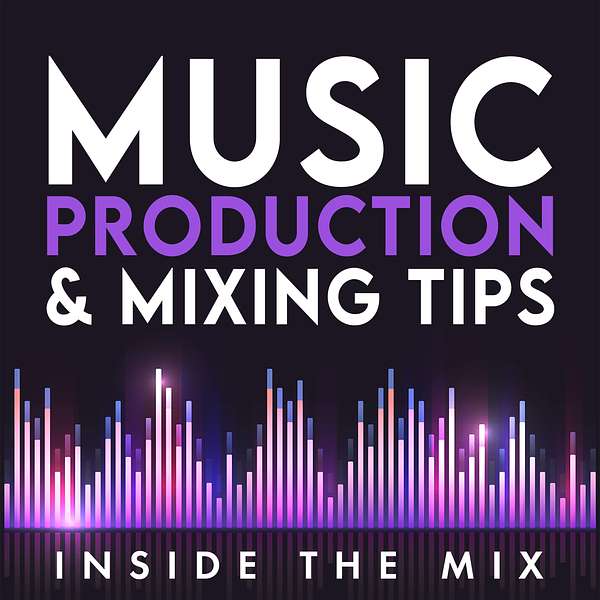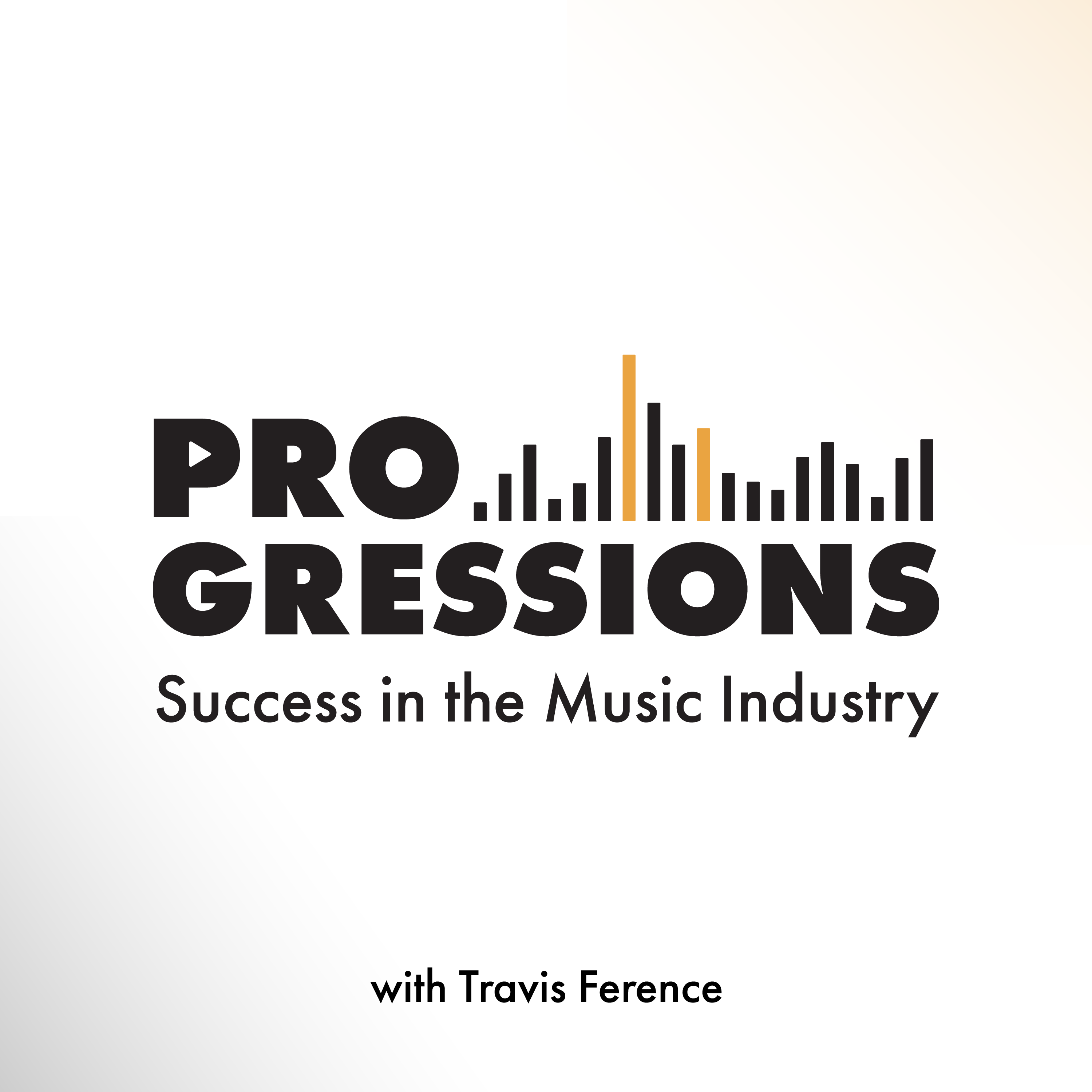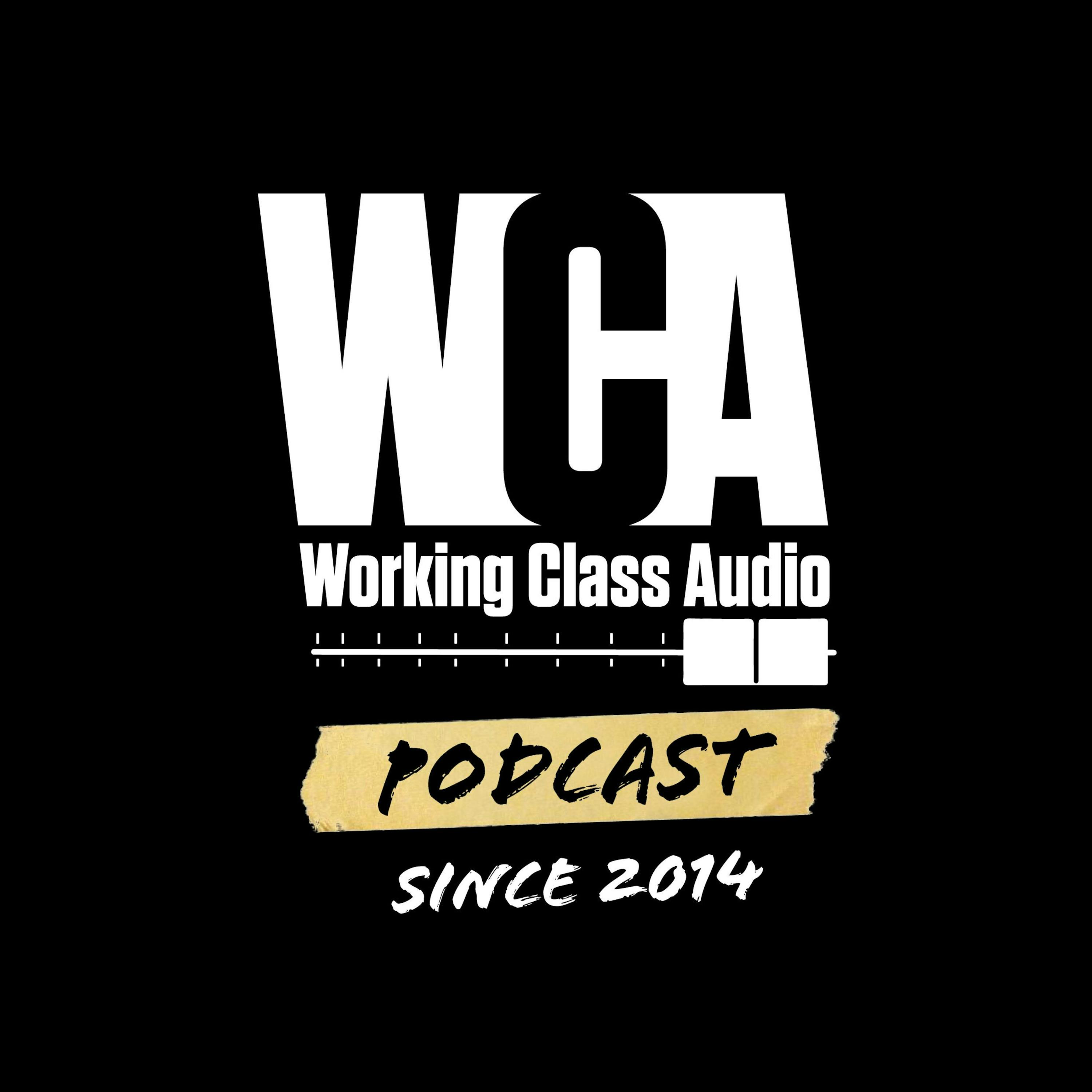
Music Production Podcast for DIY Music Producers and Artists | Inside The Mix
If you're searching for answers on topics such as: what is mixing in music, how I can learn to mix music, how to start music production, how can I get better at music production, what is music production, or maybe how to get into the music industry or even just how to release music. Either way, you’re my kind of person and there's something in this podcast for you!
I'm Marc Matthews and I host the Inside The Mix Podcast. It's the ultimate serial podcast for music production and mixing enthusiasts. Say goodbye to generic interviews and tutorials, because I'm taking things to the next level. Join me as I feature listeners in round table music critiques and offer exclusive one-to-one coaching sessions to kickstart your music production and mixing journey. Get ready for cutting-edge music production tutorials and insightful interviews with Grammy Award-winning audio professionals like Dom Morley (Adele) and Mike Exeter (Black Sabbath). If you're passionate about music production and mixing like me, Inside The Mix is the podcast you can't afford to miss!
Start with this audience-favourite episode: #175: What's the Secret to Mixing Without Muddiness? Achieving Clarity and Dynamics in a Mix
Thanks for listening!
Music Production Podcast for DIY Music Producers and Artists | Inside The Mix
#97: Sharpening Your Sound with Essential Reverb Mixing Tips
If you are looking for music production and mixing tips on topics like how to mix with reverb, where should reverb sit in the mix, and how many reverbs do you use in a mix? Then check out EP 97 of the Inside The Mix podcast.
Ready to unlock the power of reverbs in your mixes? In this episode, we'll dive into the depths of plate, hall, and chamber reverbs, and get hands-on with tailoring their use to create a tight, clean mix. I'll let you in on the secret of timing reverbs to the beat of your track and how using pre-delay can give you razor-sharp control over your sound. Plus, there's a super handy online tool that I'll share which can calculate reverb and delay time to your track's BPM.
Moving on, we'll explore the unique soundscape each reverb type brings to different instruments and the perfect balance it creates in the mix. We'll also deep-dive into how I used this technique in the mix of 'Lost and Found' featuring Aisle9 on guitar. And for our Logic Pro users, I've got some sweet tricks up my sleeve that'll spruce up your workflow. Wrapping up, we'll listen to the final mix of 'Lost and Found' to see the magic of these techniques in action. Don't miss out, tune in and let's elevate your mixing skills to the next level!
CLICK HERE, to access an online Delay and Reverb Time Calculator: https://anotherproducer.com/online-tools-for-musicians/delay-reverb-time-calculator/
Book your FREE 20 Minute Discovery Call
Follow Marc Matthews' Socials:
Instagram | YouTube | Synth Music Mastering
Thanks for listening!!
Hey, inside the Mix podcast fans, it's Midiman. Follow me or find out more in Instagram. At midimanec, from Ecuador, you are listening to the Inside the Mix podcast. Here's your host, mark Matthews.
Speaker 2:Hello and welcome to the Inside the Mix podcast. I'm Mark Matthews, your host, musician, producer and mix and mastering engineer. You've come to the right place if you want to know more about your favorite synth music artists, music engineering and production, songwriting and the music industry. I've been writing, producing, mixing and mastering music for over 15 years and I want to share what I've learned with you. Hello and welcome to the Inside the Mix podcast. If you are a new listener, please do hit that subscribe button and if you're watching on YouTube, hit subscribe and notify to make sure you're notified of new episodes, and also subscribe and follow on your podcast player of choice. If you are a returning listener, a big welcome back.
Speaker 2:So in this episode, we're going to be looking at reverb and, in particular, why you should consider using only three reverbs in your next mix. So I'm going to be using three auxiliary sends, three reverb sends three only, the reason being I don't want individual reverbs on each channel. It's going to create this cluttered, reverberant mess and I'm going to have all these instruments in different spaces. I want my instrument groups to be sat in similar spaces and that's why I'm using three reverbs. Now, in the creative process, there might come a time whereby that you want to actually have a reverb on the channel and that is totally fine for creative reasons. But I think if you are new to mixing in particular, this is a good place to start because you'll get much cleaner mix and also it's less CPU intensive. So my first reverb is going to be a short plate reverb and I'm going to use this mainly on drums. This is a plate reverb. So a plate reverb back in the day was created using a four foot by six foot piece of sheet metal with transducers attached to it, and it was used or created rather, this way because studios couldn't afford to build chambers, and it's revered by mix engineers and audio engineers etc for its smooth quality. So my next reverb is a medium hall reverb and I'm using a hall reverb because it has a longer decay time and also it has more reflections. So a hall reverb and in particular, I'm using the Valhalla vintage verb and I use this for the plate reverb as well, as I absolutely love this plugin to do. Go check it out. So my third and final reverb I'm using a chamber reverb. So a chamber reverb was created by studios. They would have a tiled room and just create this acoustic chamber and you can see why it would be more expensive than using a piece of sheet metal as they did with the plate reverb. So I'm using this for my third and large reverb. So that's a chamber reverb and it's the Valhalla vintage verb again.
Speaker 2:So another point to consider is timing the reverb to the BPM of your track. So the first one I do with this is the decay. And what is the decay? The decay is the time it takes for the reverb tail to die out, and I time this to the BPM of the track because I want it to breathe with the track. You can imagine here I've got my drum plate when that snare hits and that reverb kicks in, that reverb hits with the snare. I want that tail to die out before the next snare hit, otherwise I'm going to get this washy, weird ambient sound. So it's going to create a cleaner and tighter mix.
Speaker 2:So the second feature, or parameter, if you like, of a reverb that I like to time to the tracks BPM is the pre delay. If you're unsure what the pre delay means, it's delaying the reverb entrance slightly after you hear the source signal. Why do we want to do this? Because we don't want to wash out the sound in ambience, or alternatively, maybe you do, but you have control over that with the pre delay. With the pre delay you'll hear the sources attack and then the reverb, so you get more definition. But you can play with that. Maybe you want something to sit further back in the mix, in which case you'll decrease the pre delay. If you want it to be more upfront and hear more of that attack of that instrument, then you would increase the pre delay. So in the days of real plates and chambers, pre delay was achieved by using the slap delay from a tape machine.
Speaker 2:So I also time the pre delay to the track and here in this example, with this drum plate in the Valhalla vintage verb, I should get an affiliate link for this. I've got 11.10 milliseconds time to the track and if you just go on to Google and you search for time reverb to BPM and just plug that in, there are loads of sites where you can do this. I haven't got the actual mathematical calculations here present with me, but just go on Google and you'll find loads. In fact I'll put a link to the website I use in the episode description for finding the reverb time and also delay time as well is really useful. So let's have a look at how this plays out in my DAW and I'm using Logic Pro here, but you can use this whole idea in any DAW and I've got my plate hall and chamber reverb sends here.
Speaker 2:I've got my Valhalla vintage verb at the top and then I've got EQs afterwards. Why have I got an EQ? Because I have top and tail this using high and low pass filters, 60b slopes to get rid of any unwanted high frequencies and low frequencies, and this has been tuned to the track. It's just not an arbitrary sort of number that I've picked for the low pass and high pass filters. And I've actually got a subtle sort of presence boost here in this EQ, around two kilohertz as well, with a quite wide cue, and I've done that for each of them. Now you might say well, why aren't you just using the EQ, for example, in Valhalla vintage verb? It's because I just like to use the separate EQs, because I'm not entirely sold on the EQ that is within Valhalla vintage verb, and so I'm using the Logic Pro one here in HQ mode and I've also used the TDR Nova, which is a free EQ, and there's quite a large presence boost on this one 2.5 dB gain on that one. I might have to go and review that, but that is how I set it up and I've also labeled the send, the buses going to these reburbs, and if you're watching this on YouTube you can see it Just makes it easier when you're looking at the individual channels and their sends. I can see delay, I can see plate. I'm not looking at bus four, bus five and trying to figure out what it is. So that's a really good tip for workflow is to actually label the sends in your DAW.
Speaker 2:So let's have a listen to these reverbs in action. And I'm going to start with the plate reverb and I've used this on my drum. So I've got my drum summing stack here and I've got my individual channels with the plate reverb auxiliary sends on them. Now, admittedly, there's a drum loop here which has a touch of reverb on the snare already within the loop, but I really like this one here in particular this drum loop, and also I still use the plate reverb to put it in the same space as the hats and the crash, and I know this contradicts what I said earlier about having multiple reverbs, but I really like this one. It's a creative choice. I'll put it down to creative license. So let's have a listen with out and with. This is without, this is without.
Speaker 1:This is with, without and with.
Speaker 2:So hopefully you can hear the difference there. It's not in the context of the mix, so that reverb does sound slightly high. However, when it comes to setting the reverb, what I like to do is get it to the point whereby it's too much, and then I back it off to the point whereby it's just about. I can just about hear it. You're finding that happy medium between the two, and then I'll A B it and see if it's making any sort of introduction, it's making any difference to the mix. Okay. So next let's have a listen to this whole reverb. So this time I'm using it on my synths. So let's A B again. So I'm going to play without and then I'm going to play with. So these are the synths without and with, and without and with. So once again, hopefully you can hear the difference. It's quite subtle when it comes to the synths in particular because of the texture and the characteristics of those synth sounds. What's important is when you use I've got Anna too here and I've got Pigments is. I've gone in and the patches I've used and then sort of manipulated, already had reverb within the plugin and I've turned those off. So I haven't got these huge reverbs happening all over the place. I've just using this whole reverb Okay, the final reverb, the chamber reverb and I've used this on my guitars. So I've got my sort of left and right guitar here and I'm just going to turn the chamber reverb off and let's have a listen without reverb so you can hear this delay and there's a bit of tape echo as well, and now this is with the chamber reverb and now I'll quickly turn it off, so hopefully you can hear the difference there. I really like that chamber reverb on these really ambient sounding guitars. I think it sounds great. But let me know what you think. Leave a comment on YouTube. Alternatively, reach out to me on Instagram at Inside the Mix podcast and let me know what you think.
Speaker 2:So there we go, folks. Really simple stuff Three reverbs I've got a short plate reverb, I've got a medium hall reverb and I've got a large chamber reverb and you can see I've put different instrument groups in different spaces, albeit only three spaces. So give it a go. Obviously, I've chosen these particular reverbs and these sounds because that's what I like for this track. I'm not saying that's the right way and to copy those presets by any stretch, but it's a starting point and then you can use that as a foundation to then build your mixes. So let's have a listen to this.
Speaker 2:It's a snippet of this particular track, lost and Found, featuring R9 on guitar. So big shout out to R9. He's been on the podcast a lot, so let's have a listen and we'll play out this episode with this song Lost and Found. Hey, I'm Jack and my favorite episode of the Inside the Mix pod is number 82, which includes some really cool logic pro tips to improve your workflow. If you like me and enjoy working with me, you'll love this episode and you'll find these tips really helpful when sitting down to write some new music.









